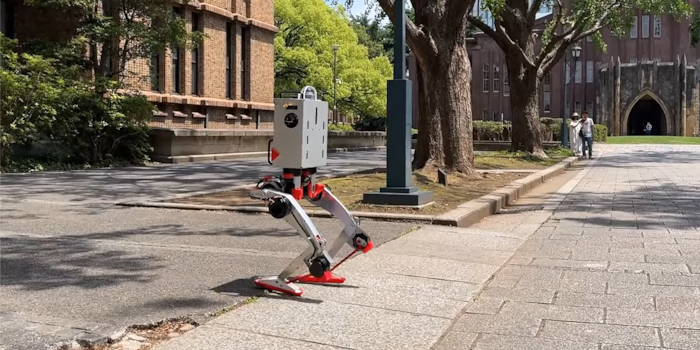
Mevita: the DIY biped from Japan
A two-legged research robot that you can build yourself - without a 3D printer, without milling, but with a welding machine. Mevita, an open source project from the University of Tokyo, shows how much is possible with clever design and metal parts.
When Mevita trudges through the landscape, he looks as if someone has given legs to a toolbox - and unintentionally created a robot with a quiet charm. No head, no arms, no facial expressions. Just joints, metal and the absolute determination not to fall over.
Technique instead of show
Mevita consists of 18 unique metal parts that can be ordered directly via Misumi's manufacturing platform Meviy. The parts are welded, not printed. The aim is a two-legged robot that hobby developers and students can assemble themselves - without industrial production or expensive special components. The construction is designed to minimise complexity. No proprietary servos, no exotic sensors. Instead: LiDAR, IMU and commercially available motor controllers.
Motion control is based on reinforcement learning in simulation: the trained model is transferred to the real hardware via sim-to-real transfer (simulation training with real-world implementation). Real-time data from LiDAR and IMU help with balance and navigation on uneven terrain. The software is modular, open-source and documented - including a training environment and sample scripts.
Metal instead of plastic
The CAD data and parts lists are publicly available. The developers deliberately opted for metal parts because they are more stable and precise than printed plastic components. The legs are designed in such a way that they do not twist under load - a typical problem with DIY robots. The entire mechanism is designed for easy production and maintenance. Anyone who can weld can build Mevita.
The project is aimed at DIY tinkerers, robotics students and research institutions that want to test humanoid motion models - without spending five-figure sums on Boston Dynamics or Unitree. Mevita is not a show robot or a PR mascot with LED eyes. It is a functional walking frame with attitude - and yes, somehow still the walking toolbox with ambition.
All data is available on GitHub and the official project page. The documentation is extensive and the software is actively maintained. Anyone starting out with the build will also find information on power supply, cable routing and sensor calibration.
I find my muse in everything. When I don’t, I draw inspiration from daydreaming. After all, if you dream, you don’t sleep through life.
From the latest iPhone to the return of 80s fashion. The editorial team will help you make sense of it all.
Show all